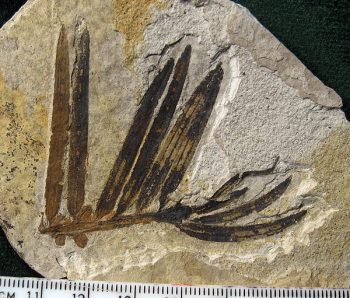
Amentotaxus as described in 1916, by Robert Knud Friedrich Pilger (1876-1953), in Botanische Jahrbüscher füsr Systematik, Pflanzengeschichte und Pflanzengeographie, 54th edition, is commonly known as catkin-yew, a genus of conifers comprising six species. Common names in other languages include 穗花扊±ž (sui hua shan shu) in the Chinese language, and Dẻ tùng in Vietnamese. Ament is from the Latin amentum, meaning "thong" or "strap" referring to the male catkins which distinguish this genus from other members of the Taxaceae family.
Although Page (in Kubitzki, Fam. Gen. Vasc. Pl. 1: 299-302. 1990) included it in the Cephalotaxaceae, molecular data indicate very strongly that it is the sister genus of Torreya, which is similar in the size and shape of its seed and in usually having bilaterally symmetric clusters of pollen sacs. Cheng et al. (2000) corroborated this conclusion using chloroplast matK gene analysis, and separately using nuclear data (nrITS sequences).
Description. The catkin-yew species consists of evergreen shrubs or small trees reaching mature heights 7 to 50 feet (2 - 15 m) tall. The species can be either monoecious or dioecious; when monoecious, the male and female cones are often on different branches.
Distribution. The genus is endemic to subtropical southeastern Asia, from Taiwan west across southern China to Assam in the eastern Himalaya, and south to Vietnam.
The genus was present in Europe from the Palaeocene to the Upper Miocene in the form of a single species, which must be referred to as Amentotaxus gladifolia (Ludwig) Ferguson, Jähnichen & Alvin comb. nov. The Tertiary assemblages with Amentotaxus indicate its adaptation to a variety of forest formations. Amentotaxus had a preference for mesophytic forests sometimes with xerophytic elements, subtropical rain' and laurel forests and warm'temperate deciduous woods.